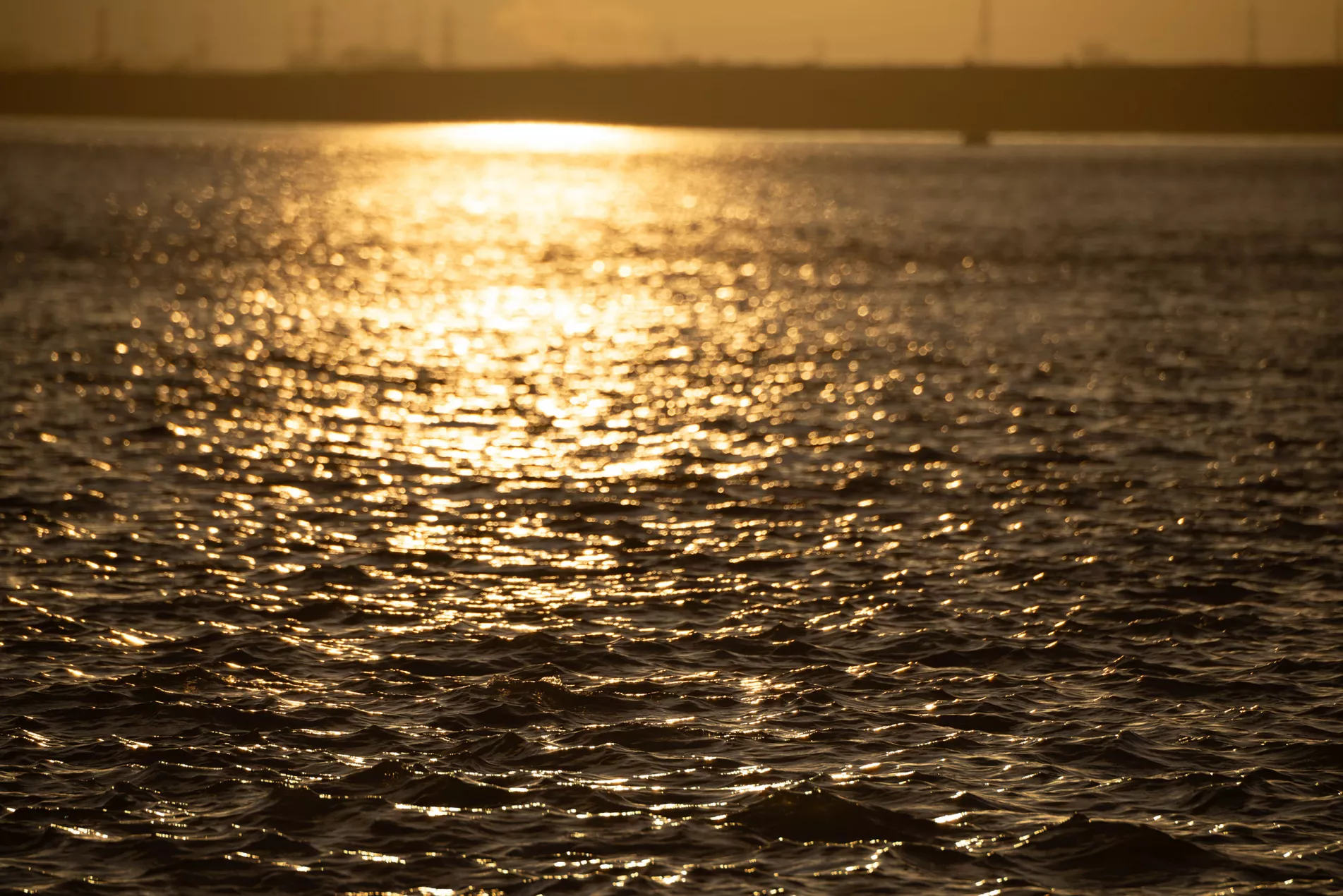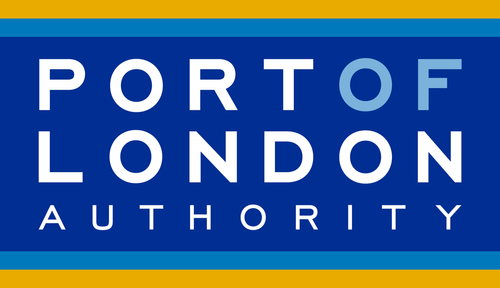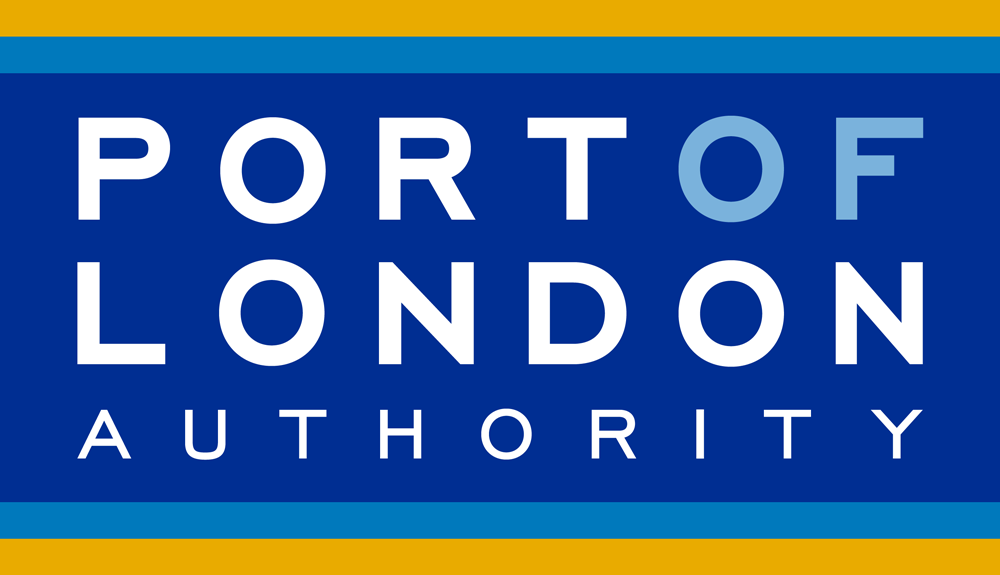Live Tides
NOTICES TO MARINERS
Charts & Surveys
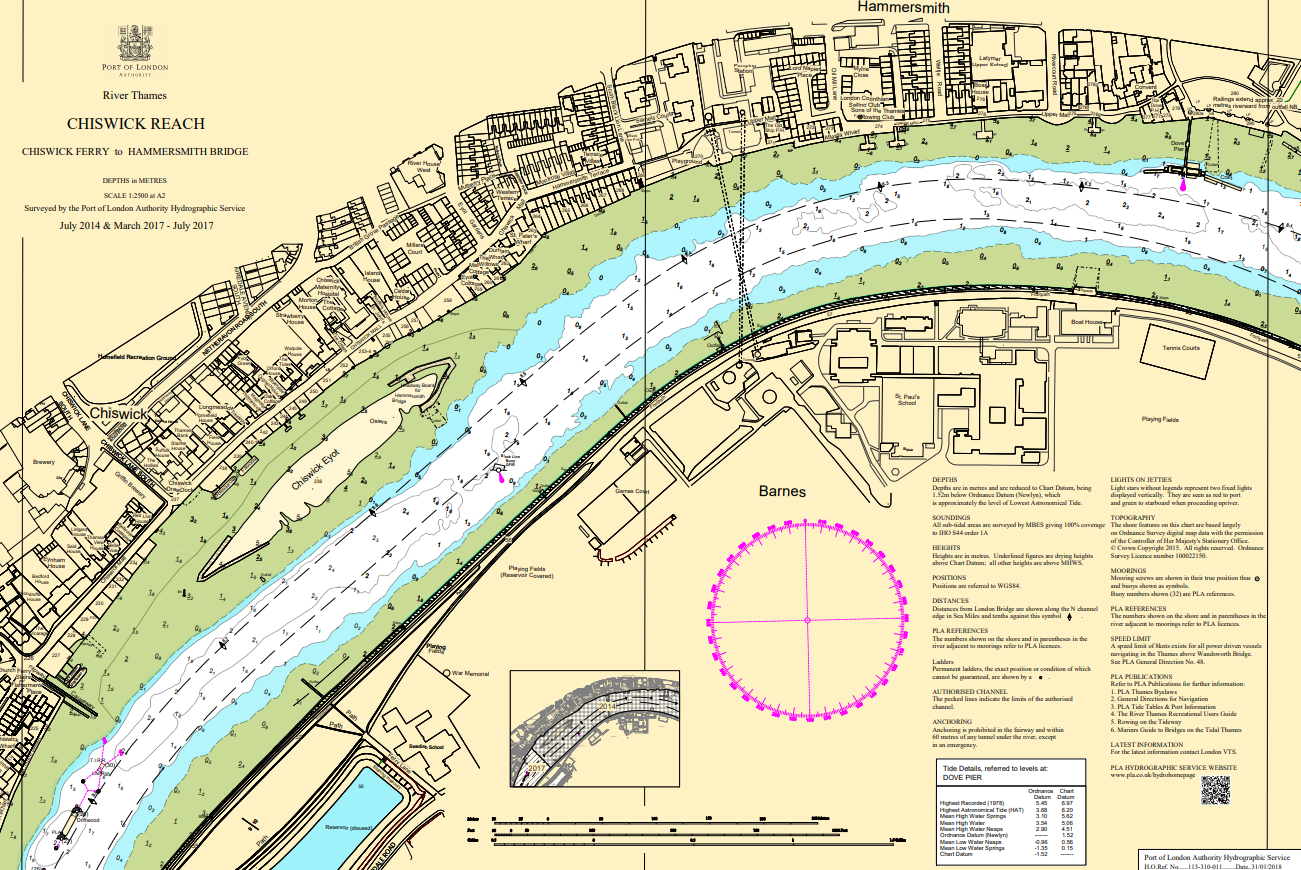
Incident reporting
Life-threatening emergencies on the river:
Call 999 and ask for the Coastguard
For near miss, safety observations and incident reporting click below
Chelsea Pensioners’ boat trip to explore London: Port City
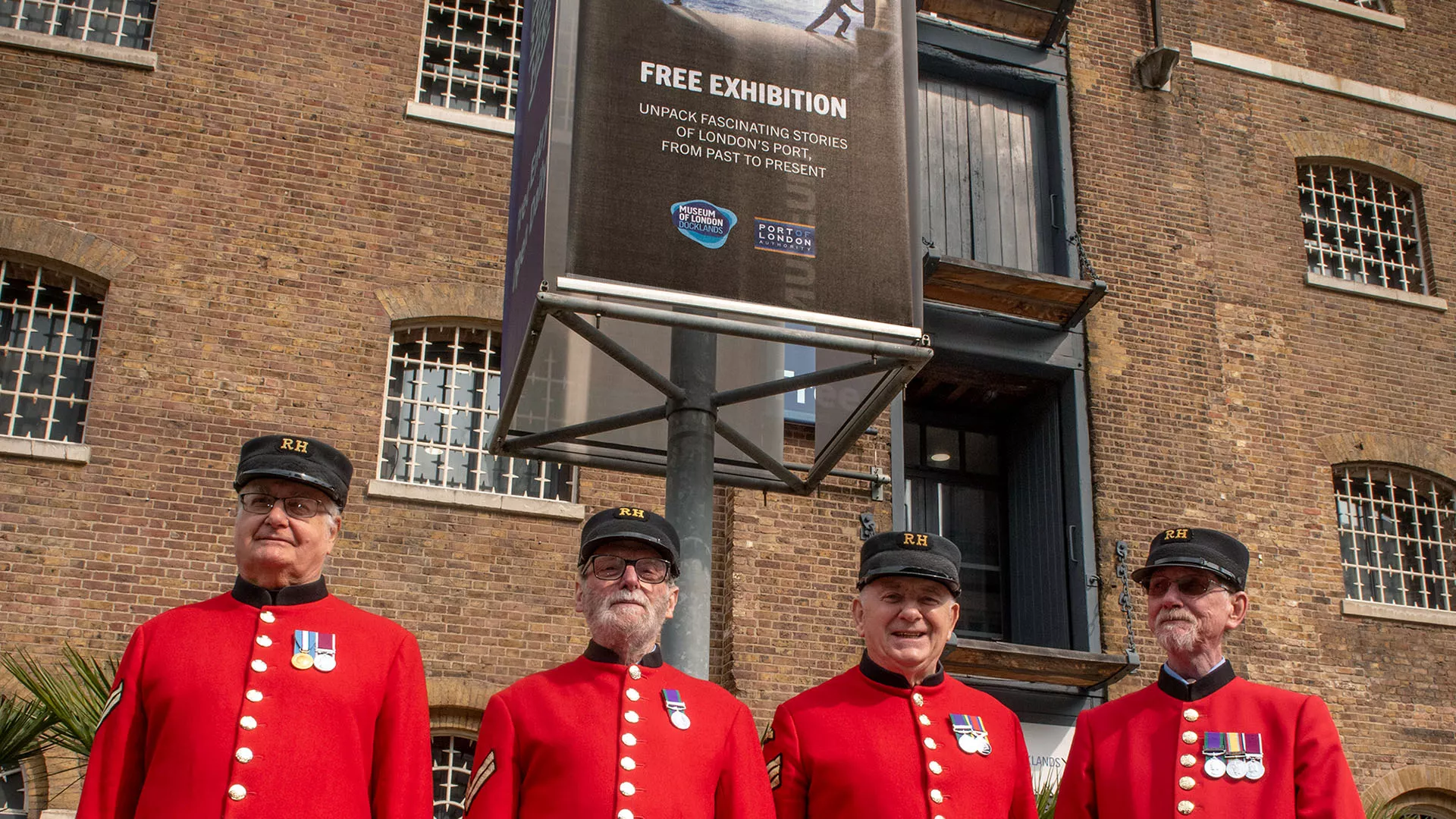
An exploration of London’s port history by a quartet of Chelsea Pensioners started with a trip on the Thames (30 March).
Army veterans Chris O’Connor, Kenroy McDonald, Trevor Rafferty and Geoff Read travelled from Cadogan Pier in the west of the capital to the Museum of London Docklands, aboard a Port of London Authority (PLA) patrol vessel.
At the museum, they enjoyed a guided tour of London: Port City, an interactive exhibition, celebrating over 200 years of the Port of London, which draws on the PLA’s extensive corporate archive, stored at the museum.
Chris O’Connor, originally from Bexhill in East Sussex, who served in the Royal Electrical & Mechanical Engineers Corps, said: “As riverside residents, we all have a strong interest in the history of the Thames, particularly how it has shaped the face of modern London.
“Our tour of London: Port City, led by exhibition curator Iona Ball, was packed with fascinating insights into the how the port, has evolved over two centuries.”
“I can highly recommend the exhibition as an Easter destination for Thames enthusiasts of all ages. It has something for everybody.”
The veterans’ river trip was hosted by deputy harbour master Darren Knight, from Bermondsey, whose grandfather was also a Chelsea pensioner.
London: Port City closes on 8 May 2022. There is no entry fee, but booking is advised via the museum website.
During the pandemic, London re-emerged as the country’s largest port, handling over nearly 52 million tonnes of cargo in 2021. The tidal Thames is also the country’s busiest inland waterway.
A PLA public consultation to update the Thames Vision 2050, charting the port’s future as Net Zero trading hub, destination and natural haven, concludes at the end of April.
Related content
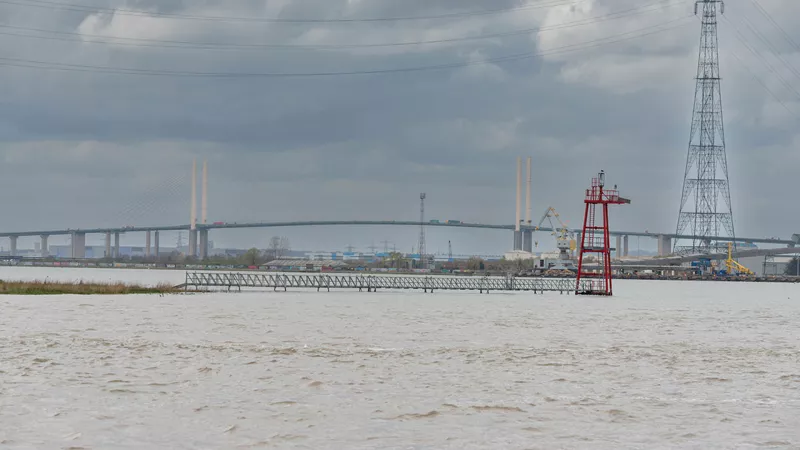

Location: London/Gravesend Remuneration: £28,971 per annum for a commitment of up to 24 days per...
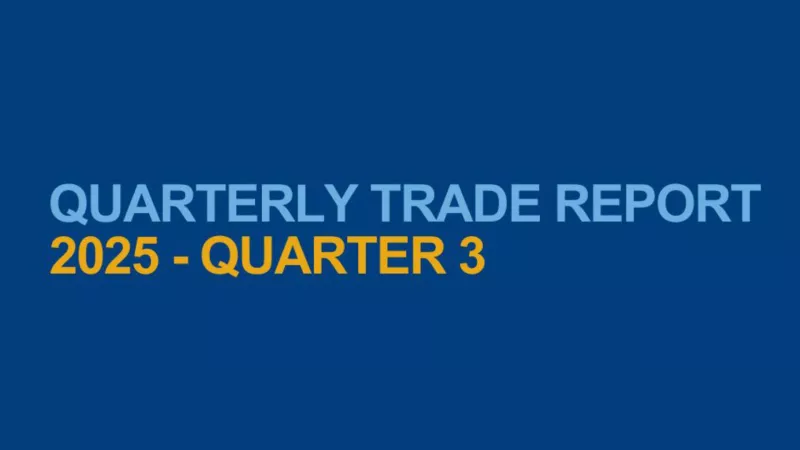
Post-covid passenger trade optimism
Richard Bain
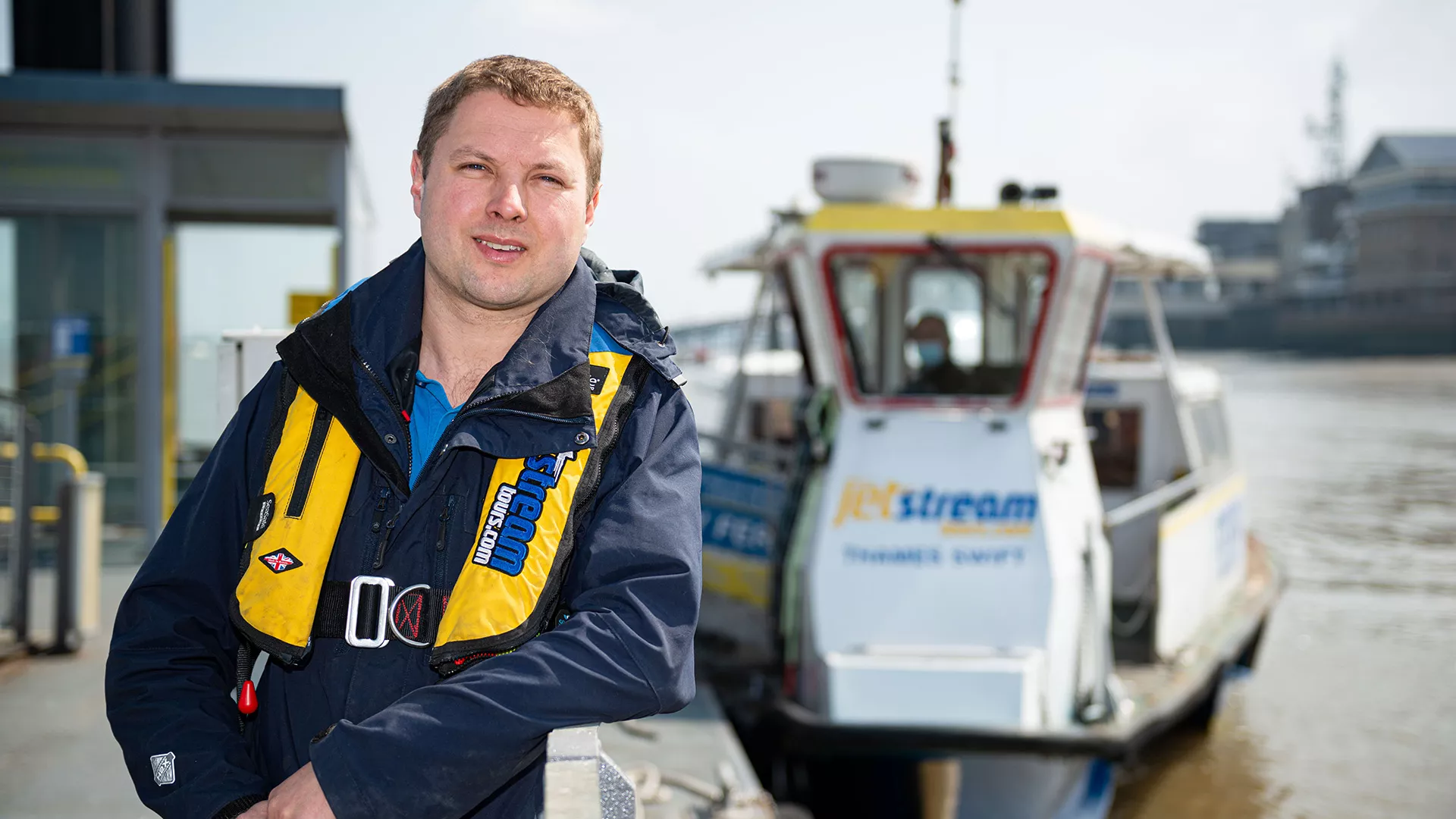
As he rebuilds his business after the pandemic, Richard Bain, MD of Gravesend ferry operator, Jetstream Tours, is optimistic about the future of sustainable passenger trade on the river.
Rooted in the river
“A third generation Thames waterman, I have been working afloat since 2001, when I was apprenticed by my father to the Company of Watermen and Lightermen of the River Thames.
“My maritime roots go even further back; recently, I found out that my great-grandfather worked aboard the White Star Line, out of Liverpool."
A maritime education
“I grew up in Gravesend and attended the town’s grammar school for boys.
“As a young lad, I loved helping my dad look after the family’s workboats.
“I learned from him how engines work, and developed an understanding of boat electronics.
“Aged 16, whilst still at school, I re-built a 14ft speedboat, which the family then used for water skiing for several years.
“On leaving school, I had aspirations to become a naval architect, but my studies on the Solent were short-lived, ending in 2001.
“I returned to the Thames to secure my Waterman’s licence.
“I’m now slowly building and maintaining my own small fleet.
“My love for boats has never faded.”
Working life
“We are a small, but growing company, currently with six employees.
“We operate two passenger vessels, two of which are in use every day. A third is due to enter service in May this year.
“We focus our efforts on connecting people with the Thames Estuary.
“Our offices are in Strood, but our vessels work out of Chatham, Queenborough and Southend."
Ferry cross the estuary
“We also operate the Gravesend to Tilbury ferry, shuttling locals and commuters across the river all year round.
“There are about 150-200 regulars that travel with us week in week out, including a large proportion of children and young people, who live in Essex, but go to school in Kent.
“Crossings during term time at the start and end of the school day can be very busy.
“Off peak, we’re used by people from north of the river for shopping trips to Gravesend.
“Our passengers’ feedback indicates it’s a much more pleasurable way to get about than sitting in traffic using the Dartford Crossing."
A source of fulfilment
“I enjoy working afloat.
“The water is a place of escape from the hustle and bustle of everyday life on the shore.
“Every day is different. You see different ships every day, bringing in cargoes from all over the world.
“The worst thing about the job is the weather. It’s nice in the summer, but winters can be gruelling work."
Post pandemic plans
“Fortunately, we have managed to survive the pandemic without having to furlough any of our staff.
“The ferry services also continued interrupted even through the lockdowns
“I am proud of that. We were a lifeline for many.
“At one point, we were the only passenger vessel operating on the Thames, transporting key workers to work.
“Our excursions remained closed for a significant period, but we used the time wisely, repainting and maintaining the boats, to make sure we were ready to reopen as soon as possible.
“We are looking to build tours to and from Southend and in the river Medway, as well as investing in the Gravesend to Tilbury ferry service, to provide a more resilient service for our customers.
“Our new vessel will be predominantly based at Gravesend, as a back-up for the ferry.”
Eco-planning
“As our business expands, we are working hard to ensure reduce our tours’ impact on the environment, reducing emissions from all our fleet for example.
“We have done this by adapting our generators to start and stop as and when needed and switching to invertors and batteries, when our power requirements are low.
“This work helped us become one the first companies to be accredited in the PLA’s Green Scheme.
“We have also introduced HVO, a biofuel that has proven to reduce emissions from our funnels."
Future hopes
“I am excited about the future.
“I hope that the river can be used far more by commuters and leisure users, particularly in the lower Thames.
“The estuary between Gravesend and the Seaward limit is a vastly untapped resource.”
“Places like Southend, Whitstable, Queenborough and Herne Bay have marine infrastructure, but it is very underutilized, decaying, or both.
“My hope is the trend for staycations following the pandemic will give more people the opportunity to visit our coastal communities and learn more about the river. “
Quick fire
- Favourite time of year on the river? Definitely May to August. Sun and calm waters.
- Best river view? Looking back at the Kent shore from Southend, particularly on a sunny summer evening. Just as the sun is setting over London in the west.
- River recommendations: Queenborough’s pubs, such as The Admiral’s Arm Micropub, are well worth a visit. The Bosuns Tea Rooms’ afternoon teas also make it a great stop off point for sailors and visitors alike.
Related content


Location: London/Gravesend Remuneration: £28,971 per annum for a commitment of up to 24 days per...

Historic Thames lighthouse restored in Gravesend

The remains of a lighthouse that guided sailors on the Thames Estuary for 90 years have undergone a Repair Shop- style renovation in Gravesend, courtesy of the Port of London Authority (PLA).
With a distinctive Jules Verne rocket ship design, Shornemead Lighthouse was established in 1913 by Trinity House, on a strategically important bend in the river at Gravesend Reach, opposite East Tilbury Fort, 30 miles from London Bridge. Depending on their position and direction of travel, mariners see a red or white light.
The old lighthouse remained fully operational until 2003 and was only replaced when the marshy land surrounding its base started to erode, causing the structure to tilt.
Over the last year, a PLA-led team of engineers has worked to preserve and restore the lighthouse to its former glory, out of view behind scaffolding and protective sheeting.
The fruits of their labour now stand in pride of place at the entrance to the PLA’s depot at Denton, on the outskirts of Gravesend, where it has been stored since 2003 for safekeeping.
James Denby, PLA’s marine services manager, said: “The renovation work to preserve this piece of the Thames’ heritage has been an outstanding team effort.
“It has involved the careful removal of layer upon layer of old lead paint that had been applied over numerous decades.
“Parts of the metal structure had been seriously eroded by almost a century of maritime weather.
“Once everything had been stripped back and the original copper domed roof could be seen, we all knew that this was something a bit special.
“It’s great that the lighthouse and its unique design can once again be appreciated by the public.”
The village of Shorne and Shornemead Lighthouse take their name from Sir John Shorne, a 13th Century rector from Buckinghamshire, who had a reputation for curing malaria, once prevalent in the North Kent Mashes. He was also well known for “conjuring the devil into a boot.”
Related content


Location: London/Gravesend Remuneration: £28,971 per annum for a commitment of up to 24 days per...

Jonson Cox appointed PLA Chairman

Jonson Cox CBE has been appointed as chair of the UK’s largest Trust Port, the Port of London Authority (PLA), by the Secretary of State for Transport, Grant Shapps MP.
Jonson Cox takes up his new role from 4 April 2022, succeeding Christopher Rodrigues CBE, who has been PLA chairman since January 2016. After an early career with Royal Dutch/Shell Group, Jonson served as managing director of Yorkshire Water group and later CEO of Anglian Water Group plc. He drove the restructuring of UK Coal plc as executive chair, leading the creation and listing of Harworth plc and serving as inaugural chair.
Jonson Cox has been chair of Ofwat since 2012, a role from which he will retire later this year. His prior Thames’ experience was as chair of Cory Group, leading its successful sale to infrastructure funds in 2018. His logistics experience includes nine years as non-executive director of Wincanton plc.
The PLA oversees the tidal Thames, home to the UK’s largest port and busiest inland waterway. It has just launched a consultation on Thames Vision 2050, the updated development plan for the river, charting a future as Net Zero trading hub, destination and natural haven.
PLA chairman, Christopher Rodrigues, said:
“It has been my very great pleasure to lead and support the PLA team as London grew to become the UK’s largest port. Thanks to the commitment of our staff, we were able to sustain the port through the COVID-19 pandemic, playing a key role supporting essential supply chains.
“Mapping and shaping the port’s future has been a major focus of the last six years. The resulting framework, Thames Vision 2050 - now out for consultation – sets the path for the river as trading hub, destination and natural haven. I look forward to watching Jonson and the PLA taking the Vision forward, making the most of the Thames, the nation’s Great River City.”
Jonson Cox said:
"I am delighted to take over as PLA chair, the second Thames-linked role in my career. The Port of London plays a key role in national life, from essential hub in supply chains to valued environment and iconic destination. I look forward to working with the team, continuing the PLA’s evolution as essential service provider and convenor, drawing the river community together, working to leave it in a better condition for future generations.”
Jonson Cox serves on the global policy council of I Squared Capital and is a non-executive director at Energia, the Irish energy group, and Ovo, the UK energy retailer.
Christopher Rodrigues is chair of the Maritime & Coastguard Agency.
Related content


Location: London/Gravesend Remuneration: £28,971 per annum for a commitment of up to 24 days per...

Energy study brings Port of London Authority one step closer to Net Zero goals
UK Power Networks Services is supporting the Port of London Authority’s (PLA) sustainability ambitions by successfully completing an energy feasibility study to identify opportunities to integrate low-carbon generation technologies across its sites and floating structures.
The PLA is aiming for a 60% reduction in carbon emissions by 2025 and to achieve Net Zero by 2040. To realise these targets, the port requires an understanding of its existing electricity network and renewable generation opportunities available.
The project has assessed the suitability for renewable energy installation, including solar and wind, at 23 of the ports’ sites and provides insight into future demand within the electricity network as the port expands.
The introduction of renewable energy technologies will enable the future decarbonisation of the vessels and provide low-carbon energy sources that will help the port meet their Net Zero aspirations, eliminate emissions and increase the resilience of the port’s electricity network.
The PLA will now be able to make informed decisions about future expansion and sustainability initiatives with visibility of their existing electricity network and viability of specific renewable technologies.
Kieran Coughlan, Head of Strategic Advisory Services at UK Power Networks Services said: “We’re thrilled to be able to help the PLA develop their future decarbonisation journey through the assessment of options for integrating renewable technologies.
“This feasibility study will enable the port to make key sustainability and expansion decisions that support their operations.”
Michael Atkins, Senior Planner at the PLA, added: “As a result of this study, we are now able to identify various options for the delivery of low carbon generation technologies across a number of our sites, which will help to meet our aim to achieve Net Zero by 2040 and help to increase energy resilience and reduce emissions across the PLAs estate and operations.”
Related content


Location: London/Gravesend Remuneration: £28,971 per annum for a commitment of up to 24 days per...

Prohibition of Russian vessels
As a port authority we have a legal duty to afford eligible vessels entry to the port. We continue to do this, while applying the regulations to affected vessels.
The Russia (Sanctions) (EU Exit) (Amendment) (No. 4) Regulations 2022 prohibit Russian ships, and other ships specified by the Secretary of State for Transport, from entering ports in the United Kingdom.
The regulations specifically require that ports must not provide a ship access to a UK port if they know, or have reasonable cause to suspect, that the ship is: owned, controlled, chartered or operated by a designated person; owned, controlled, chartered or operated by persons connected with Russia; flying the flag of Russia; registered in Russia; or ship otherwise specified.
At the Port of London Authority we are using a sanctions procedure to assess whether vessels of concern fall into the categories set out in the regulations.
Decisions are made on whether to refuse or allow a vessel entry to the port based on the criteria set out in the regulations, using a commercially available database. Where the available data is unclear, we can delay the vessel while we seek Department for Transport guidance on whether or not to admit it to the port.
Related content


Location: London/Gravesend Remuneration: £28,971 per annum for a commitment of up to 24 days per...

Admiral Sir Philip Jones joins PLA Board
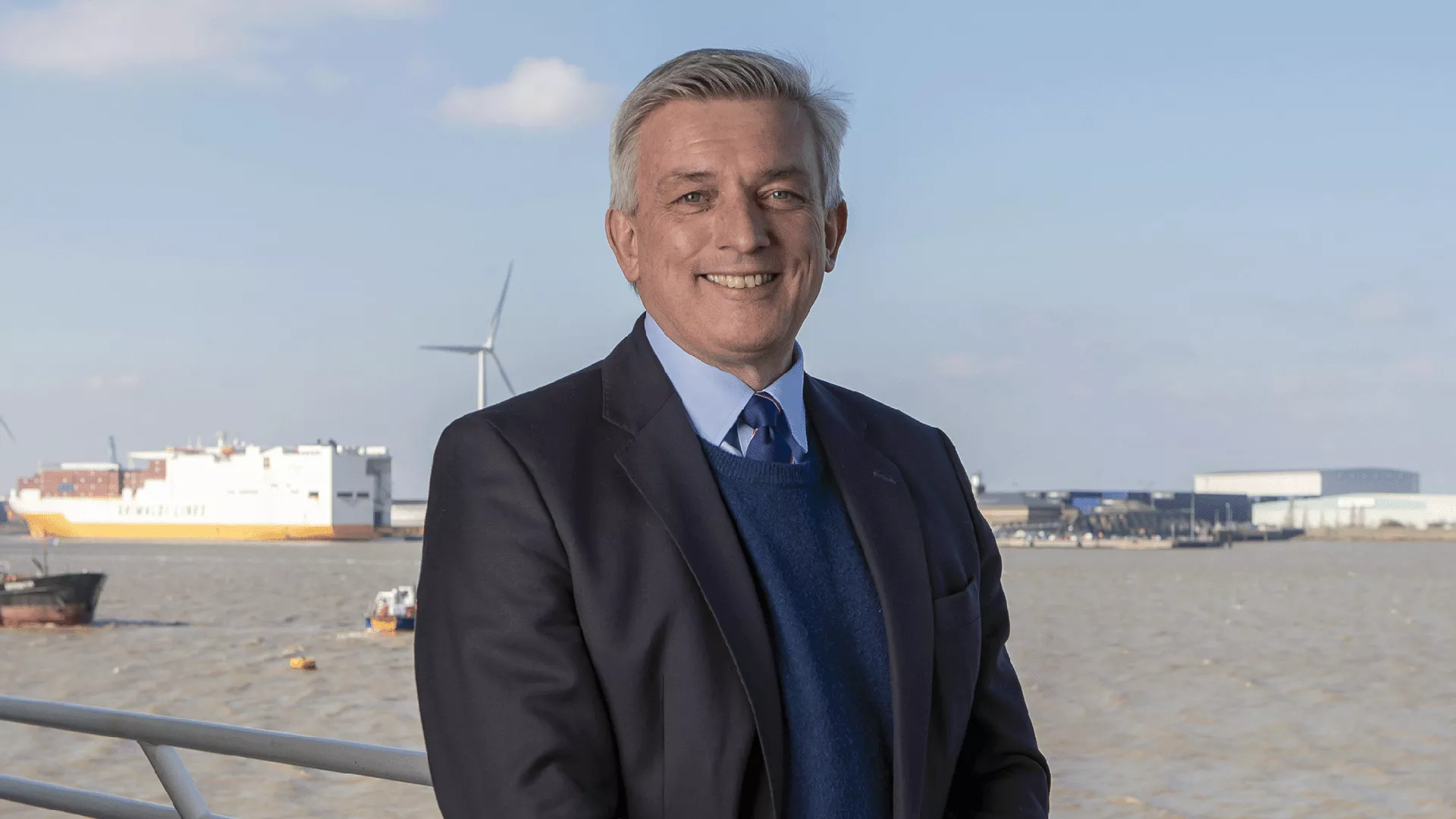
The former First Sea Lord and chief of naval staff, Admiral Sir Philip Jones has joined the Board of the Port of London Authority (PLA) as a non-executive director.
The PLA oversees operations on the tidal Thames, home to the UK’s largest port and busiest inland waterway. Sir Philip joins as the Board’s marine expert, with a particular focus on river safety. He served in the Royal Navy from 1978 to 2019, seeing active service in the South Atlantic in 1982, commanding frigates, the UK’s Amphibious Task Group, UK Maritime Forces and EU Naval Forces for Counter Piracy off Somalia, and the Fleet. He also served four times in the Ministry of Defence.
Sir Philip takes over as marine Board member from Ian Moncrieff, who retired from the PLA at the end of December 2021 after seven years’ service.
PLA chairman, Christopher Rodrigues CBE, said:
“We are delighted to have secured someone with Sir Philip’s experience as part of our non-executive team. He joins a Board with the blend of talents needed to support the PLA as we plan, with customers and stakeholders, for the long-term future of the UK’s largest port and busiest inland waterway. His expert insights into marine matters, particularly the application of new technology for the safety of navigation and the move to Net Zero will be invaluable.”
The PLA has just launched a consultation on Thames Vision 2050 the updated development plan for the river, charting a future as trading hub, destination and natural haven.
Sir Philip is a trustee of the Royal United Services Institute for Defence and Security Studies (RUSI) and chair of trustees at the National Museum of the Royal Navy. He has recently joined BAE Systems as the military advisor for the Global Combat Ship programme.
Related content


Location: London/Gravesend Remuneration: £28,971 per annum for a commitment of up to 24 days per...

Vision for Thames’ future out for consultation

The Port of London Authority (PLA) has started a consultation on a refreshed development plan for the tidal river, capturing its future as a growing and net zero trading hub, logistics superhighway, inclusive destination for visitors and a rich and valued environment.
Thames Vision 2050 shows how the river is set to play a critical role in the future of London and the south east between now and the middle of the century, as the country embraces the challenges and opportunities of the new, zero carbon economy.
The PLA is seeking views on the outlook and what needs to be done to make the most of the river across themes of: Trading Thames, Destination Thames and Natural Thames. The plan has been developed over the last 18 months and is founded on extensive research around the future of port trade, potential for passenger travel, sports participation and understanding public views of the Thames.
“The tidal Thames is a unique asset,” explained PLA chief executive, Robin Mortimer. “Its importance, scale and integration in all our lives is often underestimated. Home to the UK’s biggest and growing port, and busiest inland waterway, the Thames is central to our national economy and life. Thames Vision 2050 provides a fresh plan for the long-term development of the river.
“It sets out the scale of potential growth in port trade and river use over the next three decades, as we respond to the climate emergency, make the most of technological change to improve safety and drive growth, and work to create fairer access to the river for all.”
Drawing on stakeholder feedback, the updated Vision captures the river’s key roles as a trading hub, magnet for people and a haven for wildlife. Alongside this it sets out the steps needed to secure a safe, smart, sustainable and inclusive future for the river.
Research undertaken for the PLA by Oxford Economics identifies decarbonisation pathways for the port. They project that trade could rise from just over 50 million tonnes today to a central estimate of 70 million tonnes by 2050. Importantly, the study concludes that this growth is consistent with a Net Zero development pathway, with alternative fuels replacing the majority of fossil fuel imports over the next 28 years.
Thames Vision 2050 includes more than 40 separate actions to improve the river, including: the proposed development of a new high tech marine control centre at Gravesend; forming a Thames Net Zero Coalition; and enabling more people to take to the river through the Active Thames programme. Delivery partners include the Greater London Authority, Thames Estuary Growth Board, Environment Agency, City of London Corporation, Gravesham and Thurrock councils.
“In this consultation we are seeking people’s views on both the framework and, vitally, what people and organisations including community and interest groups can do to help us create a better river for the future, humming with potential and opportunity,” added Robin Mortimer.
Thames Vision 2050 can be read online at: www.pla.co.uk/ThamesVision The consultation programme runs for eight weeks, closing at midday on Saturday, 30 April 2022.
Feedback on Thames Vision 2050 can be sent via online survey, which can be found at: www.pla.co.uk/ThamesVision
Related content


Location: London/Gravesend Remuneration: £28,971 per annum for a commitment of up to 24 days per...

Wharf’s green future firming up

Carbon-cutting concrete is helping re-activate an east London wharf, acquired by the Port of London Authority (PLA) to grow the use of the tidal Thames for freight.
Developed by Australian company Wagners, Earth Friendly Concrete (EFC®) is paving the way for building materials to be delivered by barge to Plaistow Wharf in Silvertown, for use in construction projects, in and around London.
Along with the adjacent Peruvian and Royal Primrose wharves, the site on the doorstep of London City Airport, has been acquired by the PLA, as part of its investment strategy to boost the river’s economy.
Keltbray, the PLA’s tenant at Plaistow Wharf, is leading the installation of EFC on site, in partnership with Capital Concrete, as well as the on the neighbouring Royal Primrose Wharf.
The product typically halves levels of embodied carbon, when compared with traditional alternatives.
On site to review progress (23 February), Steven Clapperton, the PLA’s director of sustainable marine operations, said: “It is exciting to see the latest green technology involved in re-establishing these wharves, which were so integral to London’s development as a major world port.
“Greater, sustainable use of the river for trade is an essential precursor to the capital delivering Net Zero.
“It’s an aim at the heart of our investment strategy, which is now delivering tangible benefits for the growing number of businesses involved in conveying goods and materials by barge, up and down the river.”
The energy savings EFC delivers are the result of an innovative binding system, utilising waste by-products, for example blast furnace slag from the production of iron.
Its other advantages include better durability, reduced shrinkage and increased fire resistance.
Following rigorous laboratory testing to meet strict industry standards, it has already been used in building projects across London.
Due for completion this spring, the marine works, covering 0.4 acres across the two wharves, to create safe areas for the loading and unloading of materials, are currently at their half-way stage.
Tim Lohmann, Keltbray’s director of strategic engineering, said: “Working alongside the PLA, we could not be more proud to be playing our part in the renaissance of the Thames as an eco-friendly conduit for freight.”
Related content


Location: London/Gravesend Remuneration: £28,971 per annum for a commitment of up to 24 days per...

Vessel's green retrofit nears completion

Work to reduce emissions from Port of London Authority (PLA) PLA vessel Driftwood II is nearing completion.
Over the winter, a selective catalytic reduction (SCR) system has been installed to the vessel’s two propulsion engines and generator, to cut levels of nitrogen oxides emitted from the exhaust.
The green upgrade has been co-financed by the Cross River Partnership, as part of Clean Air Thames, supported by the Mayor’s Air Quality Fund. The City of London Corporation is also a project partner.
PLA marine engineering superintendent, Jason Rudd, pictured, said: “Limited space on board Driftwood II required a complete overhaul of the engine room. This included converting an unutilised chemical tank to a fuel tank.”
When Driftwood II returns to service on the river this spring, researchers from University College London (UCL) will collect new data on the vessel’s exhaust emissions. The results will be compared with studies undertaken before the refit.
Driftwood II is used to clear river debris and maintain moorings.
Clean Air Thames is also funding similar improvements to GPS Marine’s tug, GPS Anglia, involving the installation of a new, single auxillary generator, replacing two older ones.
When the works are completed later this year, the vessel is due to support construction works for the Silvertown Tunnel, using 100 per cent hydrotreated vegetable oil, not fossil-derived gas oil, which will further reduce her emissions.
UCL will also be monitoring the improvements from the GPS Anglia changes.
CRP will publish the project's overall findings and lessons learned.
Related content


Location: London/Gravesend Remuneration: £28,971 per annum for a commitment of up to 24 days per...

Discover
